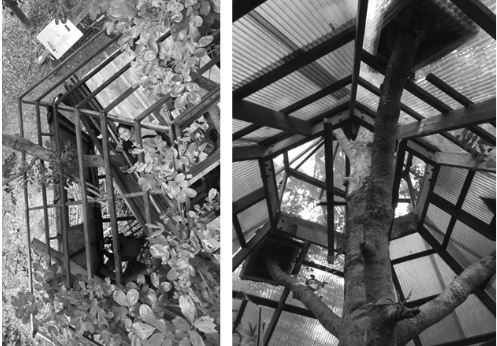Nature Integrated Architectural Design: Construction of a Habitable Tree House in Khon Kaen
Keywords:
Nature Integrated Architecture, Biodiversity, Tree House, Sustainable ArchitectureAbstract
Worldwide biodiversity is in severe and accelerating decline, often due to land use changes, resulting in a loss of ecosystem services. Northeast Thailand, including Khon Kaen, has seen a reduction in forest cover from 90% to 14% in the last century. New types of sustainable, nature integrated architecture is needed in remaining patches of forest; this will simultaneously preserve biodiversity, sustain ecosystem services, create economic value, and enable nature-based lifestyles and experiences for humans. This paper describes the construction process of a habitable, nature integrated tree house on a 0.5 hectare plot of native forest, in Khon Kaen, Thailand, using locally available materials. The tree house, with ~62 m2 of living space is supported exclusively by mature native trees, using locally manufactured tree house attachment bolts (TABs). Functions of the resulting space include sleeping, working, bathing, cooking, eating, and guest visits. The results of the construction are proof that habitable, tree supported dwellings are feasible in Khon Kaen, Thailand.Downloads
References
Bongaarts, J. (2019). IPBES, 2019. Summary for policymakers of the global assessment report on biodiversity and ecosystem services of the Intergovernmental Science-Policy Platform on Biodiversity and Ecosystem Services. Population and Development Review. Retrieved from https://doi.org/10.1111/padr.12283
Greenwood, C. S. (2013). Tree House Engineering for Code Approval. Retrieved from https://treehouseengineering.com/index.php/tree-house-engineering-for-code-approval/
Jacob, J. (2019). In World Treehouse Conference. Retrieved from http://www.treehouseclub.net.
Jodidio, P. (2017). Tree Houses (2nd ed.). Koln: Tashen GmbH.
Nelson, P. (1994). Treehouses: The Art and Craft of Living Out on a Limb. New York: Houghton Mifflin Company.
Nelson, P. (2014). Be in a Treehouse. New York, USA: Abrams.
Vityakon, P., Subhadhira, S., Limpinuntana, V., Srila, S., Trelo-ges, V., & Sriboonlue, V. (2004). From Forests to Farmfields: Changes in Land Use in Undulating Terrain of Northeast Thailand at Different Scales during the Past Century. Southeast Asian Studies. 41(4), 444–472.
Wasowski, A., & Wasowski, S. (2000). Building inside nature’s envelope: how new construction and land preservation can work together. New York, USA: Oxford University Press.

Downloads
Published
How to Cite
Issue
Section
License
Copyright (c) 2021 International Journal of Building, Urban, Interior and Landscape Technology (BUILT)

This work is licensed under a Creative Commons Attribution-NonCommercial-NoDerivatives 4.0 International License.











